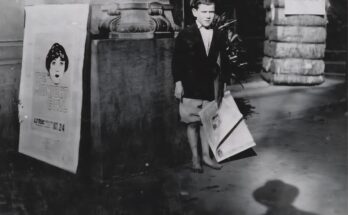Ludwik Stankiewicz was born on 28 May 1903 in the picturesque town of Muszyna, nestled in the southern part of Poland near the border with Slovakia. Muszyna, known for its scenic beauty and mineral springs, was a quiet town during the early 20th century, largely untouched by the political upheavals that would later shake Europe. Born into a working-class family, Ludwik grew up during a time when Poland was partitioned among empires. His formative years coincided with World War I and the eventual reestablishment of Polish independence in 1918. Amidst this national revival, Ludwik pursued a humble profession—he became a weaver, a trade respected for its skill and precision, and vital to the textile industry of the region.
As a weaver, Ludwik likely worked in small-scale local workshops or domestic settings, where traditional textile crafts were still common. His life was centered on hard work, family, and community. The interwar years in Poland were marked by both cultural renaissance and political instability, yet many ordinary citizens like Ludwik sought to lead peaceful, productive lives. Unfortunately, peace was shattered in September 1939 when Nazi Germany invaded Poland, initiating World War II and beginning a brutal occupation marked by repression, exploitation, and terror.
By April 1941, Ludwik Stankiewicz’s life had taken a tragic turn. On 5 April 1941, he was deported to the Auschwitz concentration camp. At the time, Auschwitz was expanding rapidly as part of the Nazi regime’s plan to imprison and exterminate those they considered undesirable. Ludwik was registered as prisoner number 12095. The conditions in Auschwitz were inhuman: prisoners suffered from starvation, forced labor, disease, and constant violence. For a man who had spent his life weaving the fabric of his community, this descent into the horrors of Auschwitz was a brutal rupture from everything he had known.
The specific reasons for Ludwik’s arrest and deportation remain unclear, but many Poles were imprisoned during this period for acts of resistance, political activity, or simply for being perceived as threats to the German occupation. As a Polish civilian, Ludwik may have been swept up in one of the many mass arrests carried out by the Gestapo and SS in occupied territories. Once inside the camp, his identity as a skilled worker might have offered no protection. Even those who were assigned labor tasks were often treated as expendable.
Ludwik spent just over seven months in Auschwitz. During this time, he would have witnessed—and endured—some of the worst atrocities committed in human history. Prisoners were systematically dehumanized, and any resistance or perceived insubordination was met with brutal punishment. The winter of 1941 was especially harsh, with food rations at their lowest and disease rampant in the overcrowded barracks. Many prisoners died from exhaustion, illness, or execution.
On 11 November 1941, Ludwik Stankiewicz’s life was violently cut short. He was shot in the camp, a fate met by thousands of others during the Nazi reign of terror. The reasons for such executions were often arbitrary or part of mass reprisals. November 11 holds deep significance in Poland as Independence Day, marking the country’s rebirth in 1918. The irony of Ludwik’s death on that date is haunting—a Polish patriot, stripped of his freedom, murdered on the anniversary of his nation’s independence.
Ludwik’s story, though brief in recorded detail, is emblematic of the countless Polish citizens who suffered and perished during the Holocaust and Nazi occupation. He was not a soldier, politician, or public figure, but a skilled laborer—a weaver—whose life was intertwined with the daily rhythms of a small Polish town. Remembering Ludwik Stankiewicz honors not only his personal dignity and suffering but also that of millions of ordinary people whose lives were unraveled by the violence of war and genocide.


